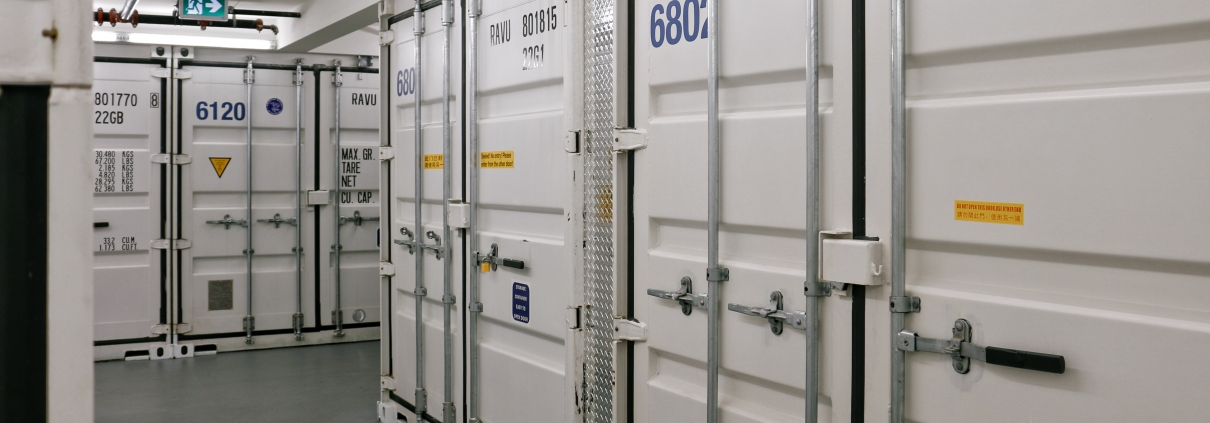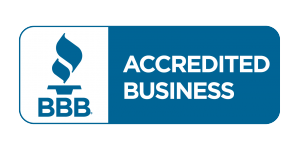Choosing a self-storage facility and the right size self storage unit.
Estimating how much space you will need for your storage items can be simple if you know what you want to store. Here are some simple steps to help you plan, and size recommendations based on commonly-stored items.
Start by identifying items that will be packed in boxes and stacked. Next, prioritize boxed items you will want to access most frequently (they’ll go closer to the front of the unit). Then group by fragility or weight; heavier, sturdier items should be stored on the bottom of stacked items, fragile items on top. Then consider awkwardly-sized items that won’t stack well, including how often you will need to use them, and how heavy they are.
Boxes and containers should be of uniform size, and should be stacked no more than three- or four-high, depending on the size and strength of the containers you use.
The first thing you need to consider is which self-storage facility to use. It’s always best to remember that you’re planning on storing your own stuff in the facility and would like it to come back to you one day in the condition you left it in. If you’re unsure, visit some local self-storage facilities and check them out first before you choose. By the time you make your choice you should be confident of the following:
* The self-storage facility has put in place adequate security measures.
* You can access your self-storage unit when you want to.
* The units on offer in the self-storage facility are the right size for you and could cope with any future needs you might have to increase or decrease the space you rent.
* The self-storage facility offers units that will suit the goods you want to store; for example, if you’re storing valuable items you want an enclosed unit with concealing walls so that nobody can see what’s inside.
* The climate control in the self-storage facility is adequate for your needs; particularly important if you’re looking to store upholstered items, business goods or archive documents as a few months in a damp self-storage environment will do untold damage.
Packing for self-storage and Organizing your self-storage unit
At this stage in your self-storage process, it’s worthwhile taking some time to plan exactly how to pack your items into the unit. Unit sizes are determined by price so you can be save money here by assessing what you have to store and planning to pack it in efficiently; a smaller and well-packed unit will be cheaper than a larger one that is badly organized.
Packing for self-storage is an art and you’ll need to put some thought into it before you begin. After all, one of the primary advantages of using a self-storage facility is the fact that you can continue to access your items even in storage.
The first thing to remember therefore is to pack in such a way that you can find things at a later date quickly and without unloading absolutely everything you’ve put away. Make an inventory of what you’ve packed and where it is as you go along. Other packing and storage preparation tips include:
Make an estimate of the replacement value of each item you store to help with accurate insurance policies and in case of unforeseen damage in the self-storage facility.
Invest in good quality sturdy boxes and packing materials; box strength degrades with use. If you buy boxes of similar sizes it’ll be easier to stack them securely in the self-storage facility and will save you space.
Box everything that you can; everything that is left unboxed in a self-storage facility will get dusty and potentially dirty.
Fill boxes to capacity wherever possible to avoid breakages but avoid making them too heavy; remember you’ll have to be able to lift them. You can use materials such as paper or towels or can buy special packing to fill spaces if necessary. Depending on the space you opt to rent from your self-storage facility, you might be stacking boxes on top of each other and the lower levels need to be sturdy enough to take the strain. Boxes that are only partly filled may tip over or collapse.
Label all boxes clearly so you can identify the contents and keep an inventory. Label them on more than one side so you can see what’s what quickly. Mark “Fragile” on any boxes containing breakable items.
Don’t be tempted to fill large boxes with heavy items such as books as they’ll quickly become impossible to carry and may break. You can buy small book boxes from your self-storage facility that will do the job just as well. If you do pack heavy items in a large box put in just a few and then fill the box up with lighter items.
Don’t pack items into sealed plastic bags, as humidity can cause mildew.
Pack books flat to avoid damaging their spines.
Don’t store wet items in a self-storage facility as they can cause water damage, mould and mildew.
All fragile items and breakables such as dishes, glasses, ornaments etc separately. Paper will do but bubble wrap is a good investment. Pack them tightly into strong boxes, filling any gaps with paper or filler. Try to avoid putting heavy items on top of fragile ones in a self-storage facility.
If you’re going to be storing clothes think about buying wardrobe or clothes boxes you’ll then be able to simply hang the clothes in them and they’ll keep their shape. It’s not wise to simply put your clothes in bin liners in a self-storage facility as moisture can get trapped inside when they’re sealed and your clothes could be ruined.
For the best protection for mirrors and pictures in a self-storage facility, wrap them in a protective covering such as bubble wrap and stack them on their ends. Mirrors and pictures should never be stored flat. Mark them as “Fragile”.
Separate lamp bases and lampshades and wrap them for protection.
If you”re storing upholstered products such as mattresses and sofas in a self-storage facility it might be a good idea to invest in covers, bags or sheeting to give them some additional protection. Stand sofas and mattresses on end wherever possible to save space and don’t stack too much on top of soft furnishings. Mattresses are best stored on the long end and should be ideally raised above floor level or laid on protective sheeting.
If you’re storing a few items of furniture on top of each other a simple dust sheet or cover placed between items will minimize scratching and damage in a self-storage facility.
You’ll save space if you can dismantle furniture such as beds and tables before you store it in a self-storage facility; make sure you keep hold of all the bits so you can get it all back together again! Wrap and cover furniture sections and keep them together, clearly marked, for quick retrieval. You can put components such as screws and bolts together in a plastic bag, mark them clearly and tape to the relevant piece of furniture. Store large pieces of furniture vertically to save space in the facility.
Chairs can be stacked seat to seat to save space. Cover chair legs with protective wrapping for extra protection.
Spray your wood furniture with a good quality furniture spray before storing it in the facility to give it some added protection.
Electrical equipment such as TVs, stereos and computers should be packed in their original boxes wherever possible. If this isn’t possible, pack them into boxes that are about the right size making sure that you pack gaps with paper etc. Make sure you tie down the player arm of a record player and secure your turntable.
If you’re storing items with fuel tanks such as lawn mowers and cars etc in a facility, expect to be asked to drain the tanks before you put them in storage. Fuel is one of the few things that you CANNOT store in a self-storage facility.
Wipe down metal objects and tools with a little oil before storing to avoid rust formation.
You can tie tools and long-handled items in bundles. Don’t store a brush resting on the bristles.
Don’t store vacuum cleaners with the bag in; throw it away before you store them in the facility.
Treat leather items with a leather conditioner before you store them.
Think hard about whether you really want to store photographs in a self-storage facility. If you do store loose photographs, place them between pieces of clean cardboard and tape them together to avoid curling. Photographs will suffer temperature damage and, if the facility you have chosen is not climate controlled, you might want to keep them out of storage to avoid losing them.
Think creatively and you’ll make more space. Plan to use furniture drawers as an extra box (they are especially good for fragile items) and you can use the inside of wardrobes to store boxes. Kitchen appliances such as stoves and fridges can also be used in this way.
Seal all your boxes with packing tape before you put them in a self-storage facility; this will help keep dust out of the contents.
There are two key things to remember when organizing your self-storage unit. Firstly, you need to make sure that you can easily access the items you’ve stored in the facility when you want them. Secondly, you must take care when storing; these are your belongings and there are measures you can take, apart from careful packing, that will help protect them during their time in the facility.
Store your largest items first.
If you’re stacking your unit high with boxes, always make sure to put the heaviest boxes at the bottom to avoid damage.
Stack boxes and similarly sized items together to save space.
Try not to lean furniture against outside walls.
If you’re storing metal objects avoid resting them against items susceptible to damage.
Try to assess what you’ll need to access frequently and keep it at the front of your unit.
Fill anything that’s hollow: “ i.e. wardrobes, drawers, washing machines and fridges with small boxes and other items to maximize your available space.
Make sure to stack boxes and containers so that you can see the labels you put on them.
Wedge the doors of all kitchen appliances whilst in the facility open to avoid bad odours and mildew etc., building up.
Don’t store anything in the facility that you’re not sure is sturdy vertically; “ if it seems wobbly store it horizontally.
Self Storage units are a popular way to store our excess or valued items. But choosing a self Storage unit can at times be a daunting and confusing task. With the many different options available many individuals simply give up and take any unit instead of the one that is best for them. This guide will show how in 4 simple steps how to pick and choose the correct self storage unit, the one that fits you and your needs perfectly .Simply ask yourself these 4 questions
Question One: How much space do I need? The first thing that you will need to settle upon is exactly how much space you will need to store your items. Self storage units come in a wide variety of sizes all the ways from the size of a small locker to as large as a aircraft hanger. You will want to know the approximate size that you will need so that when it is time to shop and load the unit you do not end up either overpaying or being stuck with too little or too much room
Question Two: How near do I need to be to my items? After roughly estimating how much room you will need, consider whether you will you need easy and quick access to your storage building. Ask yourself do you need to be near the items that will be stored or is it alright in your situation to pack them and leave them a distance away. If it needful to be close to the items you will need to limit your search to only units within close proximity to you.
Question Three: Do I need 24 hour access to my unit? The next items you will want to be sure to ask any self Storage unit provider is whether or not you are able to have access to your unit 24 hours a day or not, not all units allow this. It is a wise question to ask and it is better to ask it now than suffer heartbreak later when you dearly need something and unfortunately the Unit facilities are closed.
Question Four: Do any of my items have special storage considerations? Now look at the items you plan to store. Do they need any special consideration in their storage? Do you have any antiques, valuables, anything that may need certain climatic conditions to remain in pristine shape? If you answer yes to this question for an additional cost to you, many public self storage facilities will give you access to a climate controlled unit. This option is good to have if you’re storing anything that has value or as mentioned earlier has special storage needs and needs to be kept safe.
By asking these 4 simple questions you will soon have the perfect Self Storage unit that is right for you.







Leave a Reply
Want to join the discussion?Feel free to contribute!